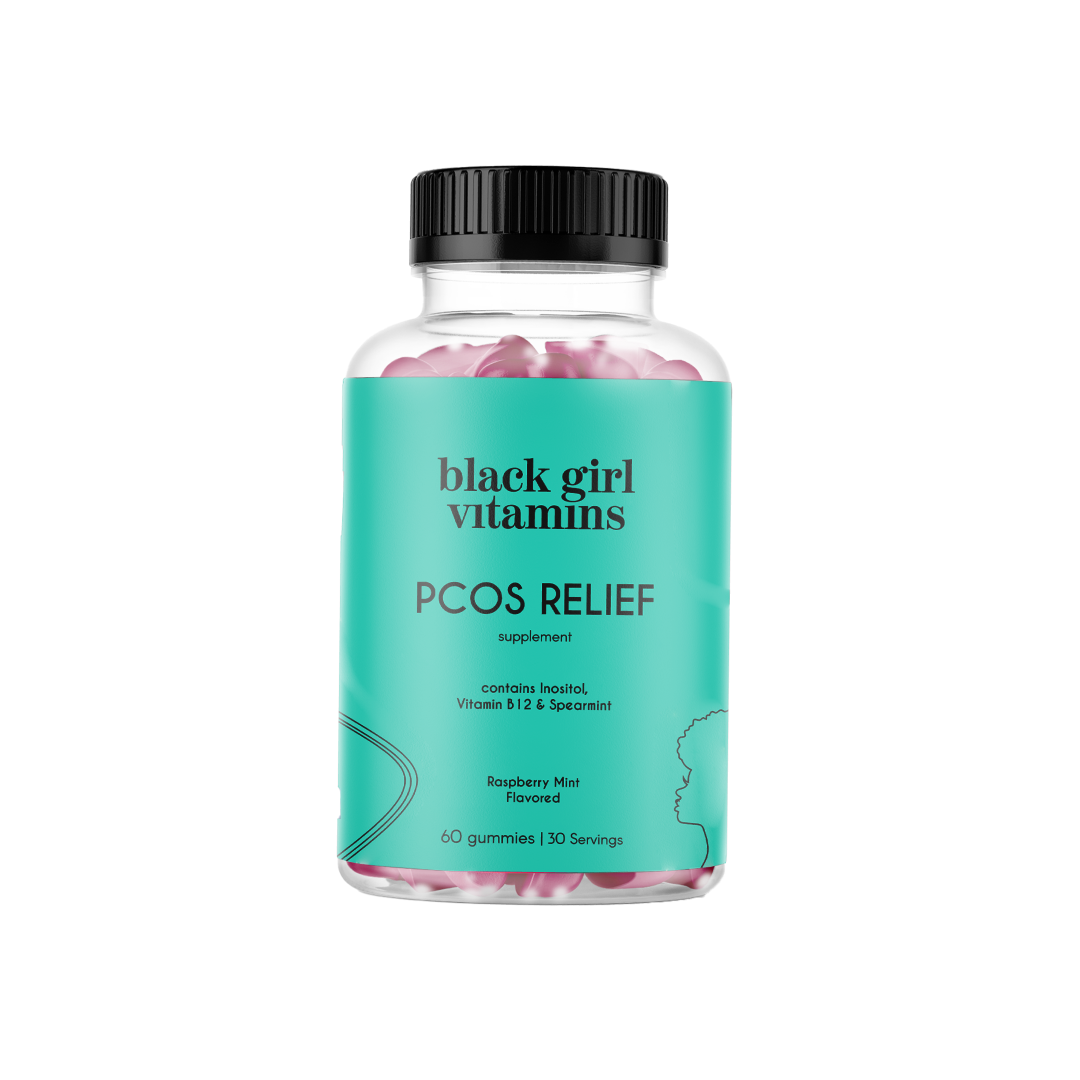Black Women Have the Highest Breast Cancer Death Rate: Addressing Healthcare Disparities
Ganiyat Adeniji for Black Girl Vitamins
Breast cancer is a significant health concern that affects women worldwide. However, it is crucial to acknowledge the disparities in healthcare outcomes, particularly when it comes to the high breast cancer death rate among Black women. Let’s explore the reasons behind this disparity and discuss potential solutions to address this pressing issue.
You might be wondering, hasn't the death rate from breast cancer been on the decline? You're correct. The American Cancer Society reports that the overall death rate has dropped by 43% from 1989 to 2020. Sounds like good news, doesn't it? Yet, it's not that simple. Despite this decrease, Black women remain the most likely to die from breast cancer. This is surprising because we have lower incidences of breast cancer compared to other races. The CDC also draws attention to this discrepancy, while also stating that breast cancer is becoming the leading cause of cancer death in Black women. These facts suggest the urgent need for specific treatment options and increased healthcare access for Black women with breast cancer. This is a difficult reality, and we need to face it full-on if we want to make a real difference.

Photo Credit- Allure
Why is the death rate from breast cancer so high in Black women? It is a complicated situation with numerous contributing factors.
1. Lack of Access to Quality Healthcare:
One of the key factors contributing to the higher breast cancer death rate among Black women is the lack of access to quality healthcare. There is a significant disparity in healthcare availability and quality. Structural barriers such as limited healthcare facilities in undeserved communities, financial constraints, and inadequate health insurance coverage often result in delayed diagnoses and sub optimal treatment options. Despite breakthroughs in early detection, diagnosis, and screening, many Black women continue to be treated differently than most other groups. This healthcare gap might lead to later-stage diagnosis and, unfortunately, worse survival rates.
2. Health Disparities and Socioeconomic Factors:
Health disparities rooted in socioeconomic factors also play a significant role in the higher breast cancer death rate among Black women. Limited access to education, lower socioeconomic status, and higher rates of poverty can lead to inadequate health literacy, delayed screenings, and reduced awareness of available resources for breast cancer prevention and treatment.
3. Biological Factors:
While socioeconomic factors and healthcare disparities contribute significantly, biological factors also play a role in the higher breast cancer death rate among Black women. Studies have shown that certain subtypes of breast cancer, such as triple-negative breast cancer, are more prevalent among Black women. These subtypes tend to be more aggressive and have poorer outcomes.
But there's more to it than that. According to new research, there may be disparities in how Black women's cells repair damaged DNA. These distinctions may have an impact on the aggressiveness of the malignancy and the efficacy of treatments. Income and education levels are also important socioeconomic determinants. Individuals from poorer socioeconomic backgrounds frequently have limited access to early detection and high-quality treatment, worsening the situation. Furthermore, Black women are statistically more prone to have diabetes, heart disease, and obesity, as well as to breastfeed after childbirth. All of these factors raise the risk of developing breast cancer. It's a lot to take in, but understanding these concerns is the first step toward effecting change.
4. Implicit Bias and Cultural Barriers:
Implicit bias within the healthcare system can also contribute to the disparities in breast cancer outcomes. Cultural barriers, language barriers, and mistrust of the healthcare system can lead to delayed diagnoses, inadequate communication, and a lack of culturally sensitive care, all of which can impact treatment outcomes.
Early detection is important in the fight against breast cancer, especially for Black women. You see, studies have found that Black women and white women get breast cancer at about the same rate. But here's the catch - Black women are 42 percent more likely to die from it. Why is that? Well, one reason is that Black women often get diagnosed at a later stage when the disease is harder to treat. That's where early detection comes in. Regular screenings, like mammograms, can detect cancer early when it's easier to treat. But here's another problem - statistics show that African American women aren't getting mammograms as often as they should. If we can improve access to these early detection methods, we can significantly improve the outlook for Black women with breast cancer.
What are the Solutions
1. Improved Access to Healthcare:
Efforts should be made to improve access to quality healthcare for all, regardless of race or socioeconomic status. This includes increasing the number of healthcare facilities in undeserved areas, expanding health insurance coverage, and providing financial assistance programs to ensure that all women have access to timely screenings, diagnosis, and treatment.
2. Education and Outreach:
Raising awareness about breast cancer, the importance of early detection, and available resources is crucial. Community-based initiatives, educational programs, and outreach efforts can help empower Black women with knowledge and encourage them to prioritize regular screenings and self-examinations.
3. Culturally Competent Care:
Healthcare providers should receive training on cultural competence to address implicit biases and provide culturally sensitive care. Creating a safe and inclusive environment where patients feel heard, respected, and understood can improve patient-provider communication and lead to better treatment outcomes. https://medicine.iu.edu/news/2023/10/black-women-breast-cancer-discovery
4. Research and Clinical Trials:
Increased representation of Black women in breast cancer research and clinical trials is essential to better understand the unique factors contributing to the higher death rate. This will help develop targeted interventions and treatments that address the specific needs of Black women with breast cancer.
How Can You Stay Vigilant?
Here are some steps that we Black women can take to protect ourselves and lower our risk of dying from breast cancer:
- Adopt a Healthy Lifestyle: One of the best ways to lower the risk of breast cancer is by leading a healthy lifestyle. This includes maintaining a healthy weight, staying active, and eating a balanced diet. A poor diet can harm your body's cells and lead to obesity. Eating healthily is key to managing your weight, and certain diets have been linked to a lower risk of chronic diseases, including cancer.
- Cut Back on Alcohol and Stop Smoking: Reducing alcohol and quitting smoking are also key in lowering the risk of breast cancer. Both alcohol and tobacco have been linked to an increased risk of various types of cancer, including breast cancer.
- Regular Screenings: Regular screenings are essential for the early detection of breast cancer. Catching it early greatly improves the chances of successful treatment. So, we need to get regular mammograms and understand our personal risk factors.
- Know Your Family History: Knowing your family history of breast cancer can help assess your risk. If breast cancer runs in your family, you might want to talk to your healthcare provider about genetic counseling.
- Consider Birth Control and Hormone Replacement Therapy (HRT) Carefully: If you're taking, or have been told to take, hormone replacement therapy or birth control pills, make sure to ask your doctor about the risks and find out if it's the right choice for you.
The higher breast cancer death rate among Black women is a complex issue that requires a multifaceted approach. By addressing healthcare disparities, improving access to quality care, raising awareness, and promoting culturally competent care, we can work towards reducing this disparity and ensuring equitable outcomes for all women facing breast cancer.
Disclaimer- While we make every effort to ensure the accuracy and reliability of the information presented in this blog, it's important to acknowledge that the content provided is for informational purposes only and should not be considered as medical advice. It is crucial to consult with a qualified healthcare professional for personalized recommendations and guidance regarding breast cancer prevention, screening, and treatment. The perspectives and suggestions outlined in this blog are meant to encourage awareness, initiate conversations, and prompt action towards addressing healthcare disparities and improving outcomes for Black women facing breast cancer. We urge readers to seek professional medical assistance and conduct further research to make well-informed decisions about their health.
Reviewed by Bryanne N. Standifer-barrett, MD



























